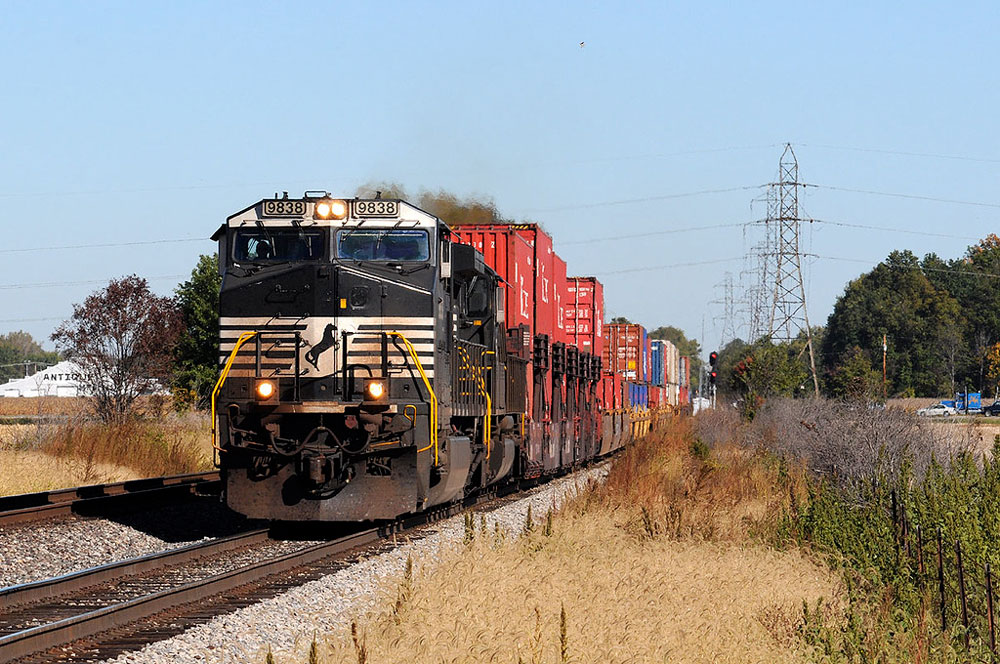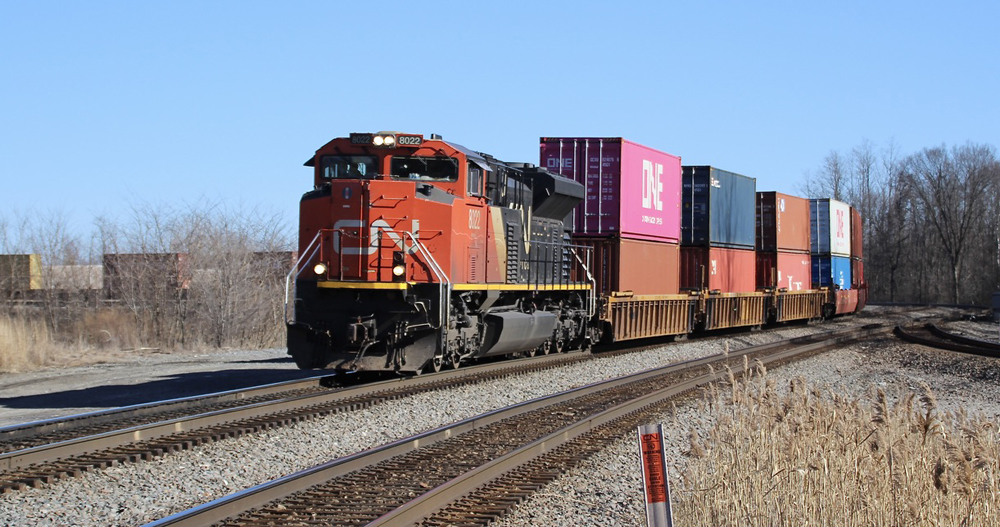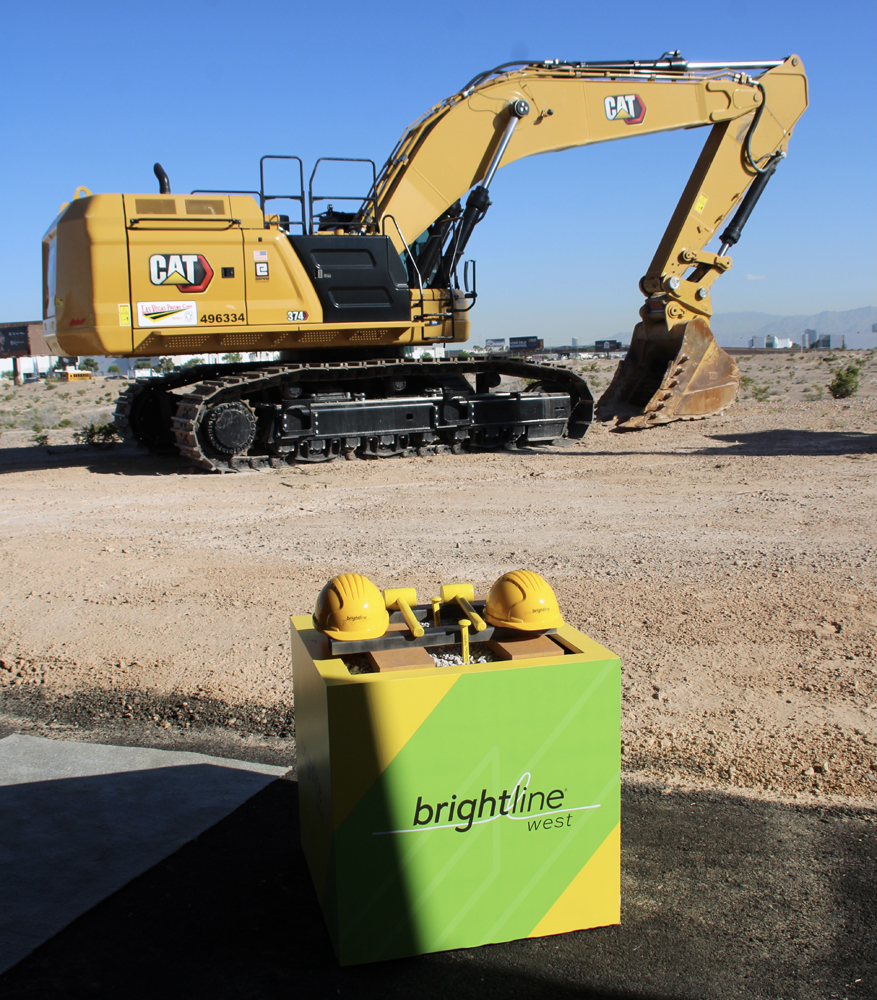The plan from the New York State Department of Environmental Conservation also includes an upgrade to a different section of track.
“In early November the [railroad] was informed an announcement by [the state agency] was forthcoming that would support the upgrade and we were asked for a supportive comment to be included in the press release — the comment provided is about the upgrade, not the rail trail. There has been no settlement. Any such reference is not accurate,” according to a letter released Friday by the Adirondack Railway Preservation Society board of directors. The Society oversees the operations of the Adirondack Scenic Railroad.
Media outlets, including Trains, reported on the original statement from New York State.
The Nov. 13 statement contained quotes from one local official and three advocates of tearing out the state-owned tracks from Tupper Lake to Lake Placid, N.Y. Below their quotes was a quote from preservation society President Bill Branson, which said in part: “This extraordinary investment assures the ability to extend accessible passenger rail excursion and scenic services, and their related economic development benefits, to Tupper Lake and the northern region of the Adirondacks.”
The railroad board’s letter from Nov. 22 says the railroad supports the rehabilitation of the line from Big Moose to Tupper Lake, N.Y., which is included in the new New York State plan. The railroad has not changed its opposition to removing the tracks to Lake Placid, and says the state’s announcement “continues the misguided effort that seeks to deprive the communities of Saranac Lake and Lake Placid of a direct connection to the national rail network.”
A state agency representative acknowledged Trains‘ request for comment, but did not offer comment by a 5 p.m., Eastern time, deadline.
Branson says the railroad board will have no further comment beyond the letter, for now.
The railroad successfully sued New York in 2017 to halt an earlier version of the state’s plan. New York State has since made changes to definitions and provided information on efforts to retain references to the tracks’ historical significance, and filed an amended plan to accomplish similar goals as the 2016 plan.















Anna Harding: It took me awhile…Dragnet !
Mister Landey:
My daughter lived there. Some of my grandchildren (and other relatives) live there.
I dropped five grand one time over something that my daughter did. She was well over 21 at the time but they came after me anyway, simply because I had money and she did not. I do not like how they run the place. From what I can see it is a decaying pit and I want nothing to do with it.
The above comments are genetic in nature and do not form the basis for an attorney/client relationship. They do not constitute legal advice. I am not your attorney. There are two things which clearly differentiates the human species from other animals. One. We use cutlery. Two. We are able to control our [deleted] impulses. Now you may be an exception, mister, but don’t you drag me down into your private [heck].
Actually there have been successful ski trains – Vermont, Colorado, I assume Alberta and I’m quite sure Switzerland. I’ll leave it to JAMES GOODWIN’s thoughtful comments on Lake Placid specifically.
ANNA – You sure get around – Oregon, California, Upstate New York.
The comments above are generic and must not be interpreted as specific engineering advice or the solution to any engineering problem or issue. Not having reviewed the plans I am prohibited by Wisconsin PE professional ethics from making comments or expressing criticism. Get your own stinking civil engineer at your own cost!
PS For skiing I recommend a charter bus. I remember one trip leaving good weather in Detroit, good snow in Northern Lower Michigan, and in between (Saginaw/ Bay City/ Midland) sleet and black ice. Sitting in the charter bus I saw numerous cars and trucks skating off I-75 to the right or to the media. The bus made it through.
“An Adirondack Scenic Railroad representative claims a New York State agency “seriously misled” the railroad when the agency sought a comment for its recent announcement about the state’s plan to tear out 34 miles of track to create a rail trail.”
That’s what happens when you expect the government to play fair and honest. “I’m from the government and I’m here to help you. ” Yeah – LMAO.
Miss Harding,
I’ve always loved upstate New York. As a Midwesterner whose family still lives in SE Massachusetts, I can’t tell you how many dozens of times I’ve gone home by road, rail or air, from when I started at U-Michigan in 1968 until the present.
The entire area from Utica east to the Massachusetts state line at West Stockbridge is the prettiest area on earth.
If you say Utica is an urban dump, then who am I to argue. Well it’s one nice looking dump.
New England has its share of urban dumps (Fall River, Bridgeport, etc.) and for that matter Boston was a total dump at the time I was born there, has greatly improved since.
Having had dealings in Utica I have nothing good to say about the place, but that does not extend to the railroad or to any other portion of the Adirondacks. Having said that …
A railroad is installed for a reason. This reason is usually economic, but can be otherwise: military, national interest, essential access, to name a few. When the reason expires or is no longer appropriate, it is logical to remove the railroad.
If I understand the history of this line, it was installed in 1892 as the Mohawk and Malone Railway and later became part of New York Central in 1913. When it was installed the automobile was a rarity and it provided access to Lake Placid. These days the automobile (for better or for worse) is the dominant mode of transportation and the railroad is no longer essential for access to the Lake Placid area.
The Adirondack Park Agency was established in 1885 and controls and administers the Adirondack Park, which has approximately half its area take up by inholdings. These inholdings include over 100 towns and villages, and numerous business ventures, including farms and a thriving logging industry.
The railroad today, in the form of the Adirondack Scenic Railroad, is a tourist railroad operating from Utica and Remson on privately owned rail. The rail from Remson to Lake Placid is owned by the State of New York. There is also freight traffic between Utica and Lions Falls.
A railroad – any railroad, including tourist roads – must provide a positive net cash flow into the area or they simply are not viable. There are exceptions, of course, such as lightly used lines of military importance. But largely this is true.
It is not the case that the railroad itself, in the case of a tourist line, pays for itself in the form of farebox receipts, as long as the differential is brought into the area and left by the tourist traffic. In this case it is of economic benefit to the area for the local government to subsidize the railroad. This is done, for example, in the case of the Cumbres and Toltec, although that railroad may well pay for itself directly. But that was the original rationale for the purchase of the line by the states of Colorado and New Mexico.
With the Adirondack Scenic Railroad the case for preserving and operating the line from Utica through to Lake Placid must be made in this light. Is the net benefit to the area greater with a fully operational and functional railroad, or is it greater by taking up the tracks north of Remson?
And if the decision is to take up the tracks, what value is there in rail banking the ROW against the event that the economics once again shift and make reinstallation of the tracks a paying proposition?
The above comments are genetic in nature and do not form the basis for an attorney/client relationship. They do not constitute legal advice. I am not your attorney. Antelope Valley Freeway, 1/16 th mile.
Here’s another alternative that could’ve been easily done by the railroad….they want a trail, fine, put a trail in right next to the rail line..bingo, rail and trail. Or, better yet, put a Federal moratorium on removal of all existing rail lines, end the Rails to Trails program and Rail Banking in the interest of the national economy and security.
As for James Goodwin’s comments…he forgot one important factor, the number of tourists that visit the area on an annual basis. You always have to start with the volume of potential passengers the service might serve, otherwise you’re just doing it backwards.
Mister Goodwin:
You misinterpret what I say. I do not say that the railroad is no longer viable. I also do not say that the railroad is still viable. I ask the question, even if the railroad does not pay for itself via the farebox, does it provide sufficient added inflow of funds into the area to warrant its support?
The above comments are genetic in nature and do not form the basis for an attorney/client relationship. They do not constitute legal advice. I am not your attorney. This is not the place for some witty remark.
I agree with Gerald, rails to trails has steered of course and needs to be stopped as a national program.
Anna Harding, thanks for your reasoned response. It was the Adirondack Forest Preserve that was started in 1885, and that is how state land is managed within the Adirondack Park. The Adirondack Park Agency was established in 1972 to also look at private land use while providing an additional check on uses of the forest preserve. If you don’t live here or follow this history, don”t feel bad that you don’t know the intricacies of this incredibly complicated way in which land in the Park is governed.
You are right that as of 1892 the railroad served an essential purpose in transporting people toLake Placid and other tourist destinations within the Adirondacks. As you note, for better or worse, most people now drive here so that they have transportation when they get here. In earlier times, people came for a month or two, so a day on the train each way was not a big deal. In the current era with mostly weekend get-aways the predominant vacation mode, a day on the train each way is not acceptable. So, as you surmise, there is no economic justification for a railroad to Lake Placid at this time. But the road bed will still be there whenever the conditions change.
It would be cheaper to solid plank over the existing track 34 miles with 20′ wide timber below the rail head. Both snowmobile and trains could use the line by schedule. Or cover the track with stone and lightly pave that below the rail head. Much cheaper that what Ulster County if doing to the Catskill Mt. RR. That would comply to the law regarding its historic classification. Time for a new law suit.
A 140-mile, 5-6 hour ride from Lake Placid to Utica seems to be a whole new definition of “direct connection” to the national rail network. As I have said before, I am a railfan, but only when rail service serves enough riders to be reasonably sustainable. The Amtrak’s “Adirondack” run along Lake Champlain between NYC, Albany, and Montreal only meets one-half of its operating costs. The State of New York chips in the other half to keep the service running. What percentage of the operating costs will the State of New York ultimately have to bear to keep passenger service going between Utica and Lake Placid?
For those readers who are not familiar with this area, Utica is a city of 70,000 (maybe 100,00 metro), and Lake Placid is a town of 5,000. Lake Placid is a recognized tourist destination, but it is not the Grand Canyon. Furthermore, the ride is much longer (six hours as opposed to two) and once at the Grand Canyon all services and attractions are a short walk or shuttle bus ride away. By contrast, most of the attractions in Lake Placid are more distant than any regular shuttle bus system could handle.
To re-establish service between Utica and Lake Placid, New York State will have to spend at least $20 million, and that’s just for Class II track which means 30 mph operation for passenger trains. That same $20 million invested in the Amtrak service along Lake Champlain should be sufficient to fund a second daily, early morning train that started domestically (no border crossing) in Plattsburgh, and connected in Albany in time to get to NYC for an afternoon of whatever. A return train could also allow a major part of a day in NYC – something that might appeal to many who now live here but still have work/business interests in NYC.
Think outside the box sometimes.